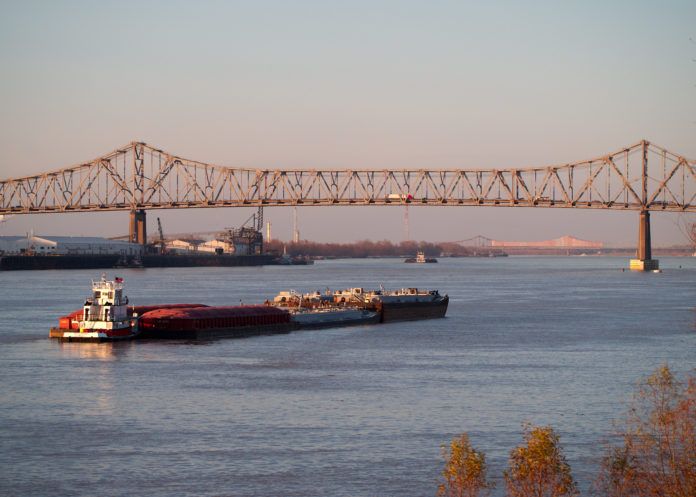Consultants working with the state on the planning for a new bridge across the Mississippi River in Baton Rouge will spend the next three months doing traffic modeling, analyzing potential sites for the new span and working on public outreach, which will include developing a website and meeting with key agencies.
At a meeting earlier this afternoon, representatives from Atlas Technical Consultants, the Louisiana Department of Transportation and Development’s consultant on the project, briefed the Capital Area Road and Bridge District on the progress they’ve made so far.
The ambitious project is still in the preliminary stages and no construction date was discussed today, but things are moving forward, Atlas project manager Kara Moree told district commissioners.
One of the most significant steps the consultants will take over the next three to six months is helping the state narrow a site for the bridge to two or three best options. Five potential locations, all south of the city, have been identified so far and are being studied.
All five sites would connect the new bridge to La. 30 on the east side and La. 1 on the west side.
The consultants will also sift through existing data to analyze traffic patterns and determine what additional information is needed to help formulate a plan.
Commissioners asked DOTD Secretary Shawn Wilson, who was present for the meeting, if the state is also planning to enhance the capacity of La. 1 and La. 30, which will be critical to reducing bottlenecks even after a new bridge is built.
“It is true you will not have the maximum value until this bridge reaches I-10 on both sides,” Wilson says. “But unless you get started you’ll never get finished and I think we can walk and chew gum at the same time.”
Separately, economist Loren Scott presented a study to the commissioners, suggesting a new bridge will not only help alleviate traffic but create new economic development opportunities.
Based on historical data looking at growth in Baton Rouge following the construction of the Horace Wilkinson Bridge, or the “new bridge,” in 1973, and the Highway 210 bridge in Lake Charles, Scott concluded that building a new bridge connecting La. 1 to La. 30 would allow existing industries to expand their footprints, creating jobs.
“Building a bridge doesn’t just alleviate traffic,” Scott says. “It creates jobs.”



